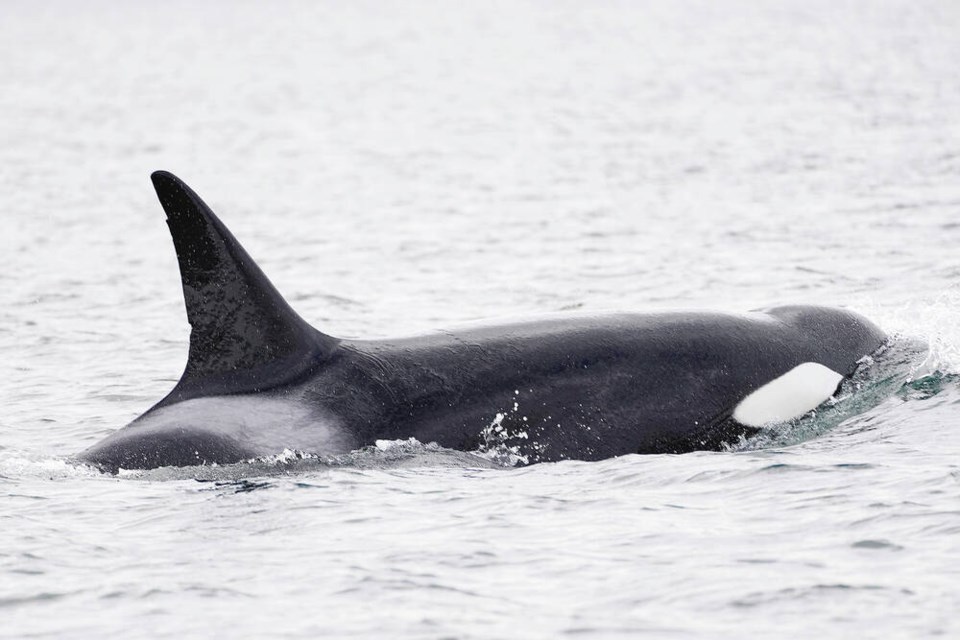A Bigg’s orca captured for aquarium shows in the mid-1970s but freed after a public outcry is presumed dead after not being seen with her family group in nearly a year, according to scientists.
T046, also known as Wake, went on to become one of the most “prolific” mothers in the wild on the west coast.
Born around 1966 — her exact age isn’t known — Wake gave birth to eight calves, including four sons and four daughters.
Her daughters produced 15 grandchildren, and her granddaughters gave her five great-grandchildren. There would likely be many other descendants through Wake’s sons, though only matriarchal records are kept.
Jared Towers, a whale researcher with Fisheries and Oceans Canada and executive director of Bay Cetology in Alert Bay, was the last to record and photograph Wake last February. He called her one of “the most prolific female killer whales ever known.”
Towers said T046 appeared healthy and was actively engaging with her family as they swam by Alert Bay off the North Island, but several sightings of the family since haven’t included the matriarch.
T046 was one of five Bigg’s orcas captured and held in a pen in Puget Sound for several weeks in March 1976 when whale captures for marine parks were still legal.
Known as the “Budd Inlet Six,” the orcas were rounded up using boats, planes and explosives, according to Victoria-based Cetus Research and Conservation Society.
But a massive public outcry and media attention over several days led to the release of the orcas and ultimately the end of live captures on the West Coast.
Cetus Research said T046 was named after Nancy Wake, a member of the French Resistance who helped Allied soldiers and Jewish refugees escape the country during the Second World War.
The orca was known for two notches on her dorsal fin — which made her instantly recognizable — and always travelled with a daughter and three sons.
Towers said scientists considered Wake deceased after “many months” of her not being seen with her family. It’s very rare — less than 5% of cases — that a carcass is ever found, so a cause of death likely won’t be known.
Towers said Wake will be missed.
“She got around,” said Towers. “We’ve seen her in the middle of Hecate Strait, southeast Alaska, Prince Rupert, the North Island, Tofino, Nanaimo, Victoria and a lot in the Salish Sea.”
Towers said she was a strong matriarch who was “all business.”
He said while members of her pod would stop to frolic and breach, Wake would “put an end to the nonsense and get them to sleep or start travelling.”
Wake’s estimated age made her one of the oldest females in the local Bigg’s population and she held the record for the most offspring, according to Melissa Blake, a naturalist with Eagle Wing Tours of Victoria.
The orca travelled with daughter Centeki (T122) born around 1982, eldest son Strider (T046D) born in 2000, son Thor (T046E) born in 2003, and youngest son Loki (T046F) born in 2012.
Wake’s count of eight offspring is remarkable given that female orcas have an average of five calves in their lifetime, according to Blake. They usually give birth to their first calf at 12 to 14 years of age.
Due to their lengthy gestation period of 15 to 18 months, killer whales give birth on average every three to five years.
>>> To comment on this article, write a letter to the editor: [email protected]



